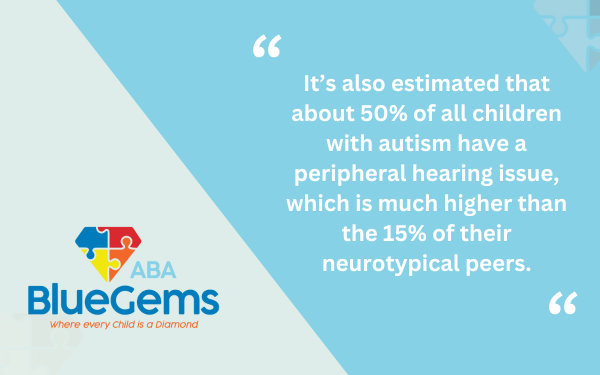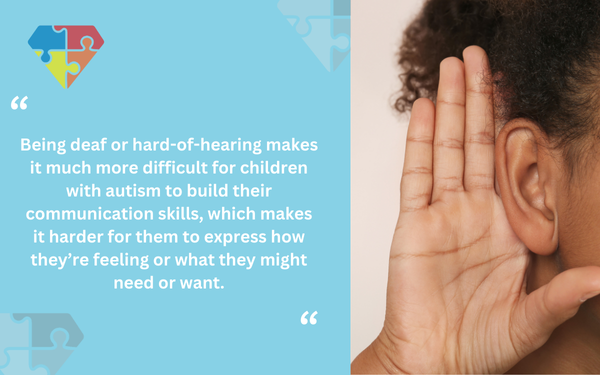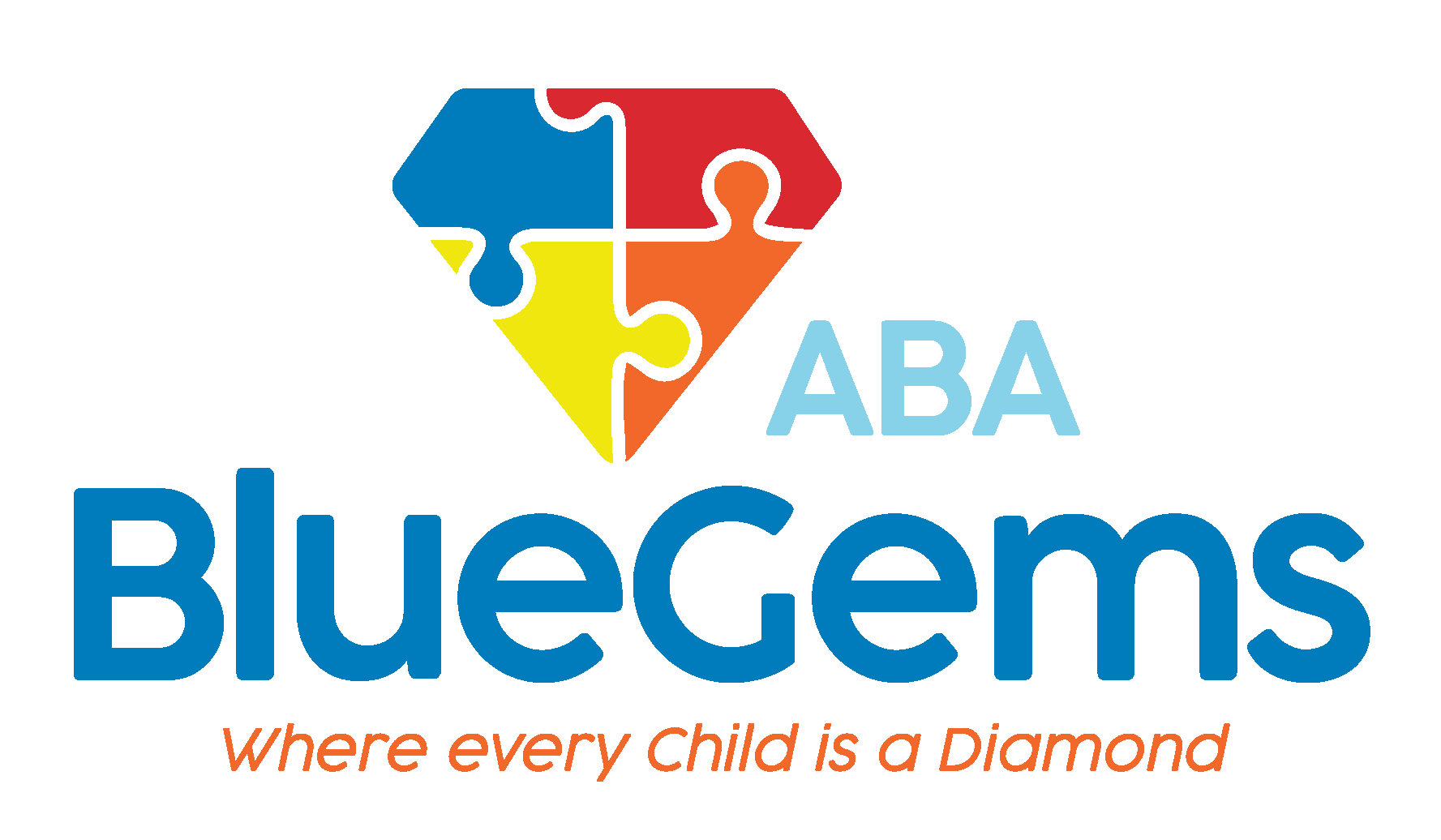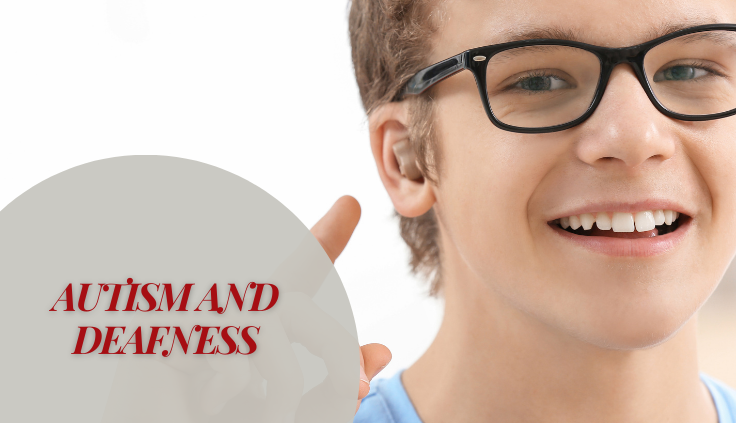Autism and Deafness
Many people with autism spectrum disorder (ASD) also suffer from co-occurring conditions. This can make life even more challenging for people on the autism spectrum, depending on the severity of their ASD and what the other conditions they suffer from are.
Children who have autism commonly suffer from auditory processing disorders.
This doesn’t necessarily mean they are deaf — or don’t have the ability to hear sound at all. Instead, it means that they are affected in a way that they aren’t able to interpret and/or process information from sound the same way neurotypical individuals are.
That being said, children who have ASD also suffer from deafness at a much higher rate than their neurotypical peers.
Here, we’ll describe the link between autism and deafness, other auditory processing disorders children with ASD suffer from, and how treatments such as applied behavior analysis (ABA therapy) can help.
Table Of Contents
Is There a Link Between Autism and Deafness?
Statistics show that children with autism have a much higher rate of co-occurring deafness than the general population.
A recent study estimated that between 4% and 9% of children who are hard-of-hearing or deaf also have autism. In contrast, that rate in neurotypical children is only about 1%. Research has also shown that the more severe a child’s deafness is, the more likely they are to suffer from autism.
It’s also estimated that about 50% of all children with autism have a peripheral hearing issue, which is much higher than the 15% of their neurotypical peers.

All of this research suggests that there could be underlying factors that link hearing challenges and autism.
What Are Some of the Possible Causes of Autism and Deafness?
There’s been much research into how autism and deafness are linked.
A 2014 study theorized that individuals with autism might have a less developed hippocampus. This is the part of the brain that processes auditory information.
A study conducted a year later by The Children’s Hospital of Philadelphia suggested that many children with ASD do, in fact, hear normally. However, they process information from sound at a slower pace than those without autism.
While no definitive link between autism and deafness — or auditory processing disorders in general — have been found, there is strong information that suggests it’s much more than a coincidence.
How Are Children with Autism and Deafness Impacted?
Children who have autism and deafness are profoundly impacted by their co-occurring conditions.
Autism alone causes challenges with communication and social interactions — sometimes significantly. When deafness or other auditory processing disorders are added into the mix, it can compound these problems.
Being deaf or hard-of-hearing makes it much more difficult for children with autism to build their communication skills, which makes it harder for them to express how they’re feeling or what they might need or want.

Having trouble hearing could also compound social interaction issues, making it harder for them to form meaningful relationships with other people. It could even make it harder for them to process certain sensory stimuli, which could make their sensory sensitivity issues even worse.
All of this, of course, could lead to children with autism and deafness feeling more isolated, anxious and overwhelmed than children who have ASD or deafness alone.
How Can You Support Children with Autism and Deafness?
ABA therapy is considered the gold standard treatment option for children on the autism spectrum, and this is true regardless of what co-occurring condition, if any, they are suffering from.
The science-based approach to learning and behavior is a very versatile treatment plan that helps children with ASD build communication, social interaction and daily life skills while also modifying certain behaviors.
ABA therapists have a wide variety of strategies and tools at their disposal that they can use based on each individual patient’s unique strengths and challenges.
For children with autism and deafness, those tools might be more image-based than for others. ABA therapy already relies heavily on visual aids to help children with autism grow, as they are generally considered to be visual thinkers.
By using different picture cards, prompts and other visual aids, ABA therapists can help children with autism and deafness communicate better to express their needs and their feelings — even if they can’t use words to do so.
Parents, caregivers, family members and other support professionals can also learn how they can best support the child through ABA therapy best practices. As they are taught what strategies work best for their child with autism and deafness, they can apply those strategies outside of sessions to best support the child.
Your Child with Autism Can Learn Skills at Blue Gems ABA
Children with autism and deafness face many additional challenges than children who have autism or deafness alone. The two co-occurring conditions can compound problems with communication, social interaction and much more.
At Blue Gems ABA, we support all children with autism, regardless of what co-occurring conditions they may also suffer from. We cater each of our ABA therapy treatment plans to the individual patient, making sure to specifically target the strengths they have and challenges they face.
To learn more, please contact us today.




